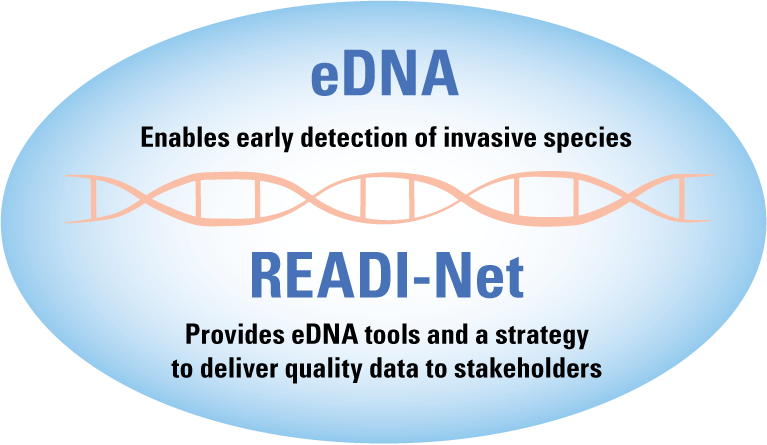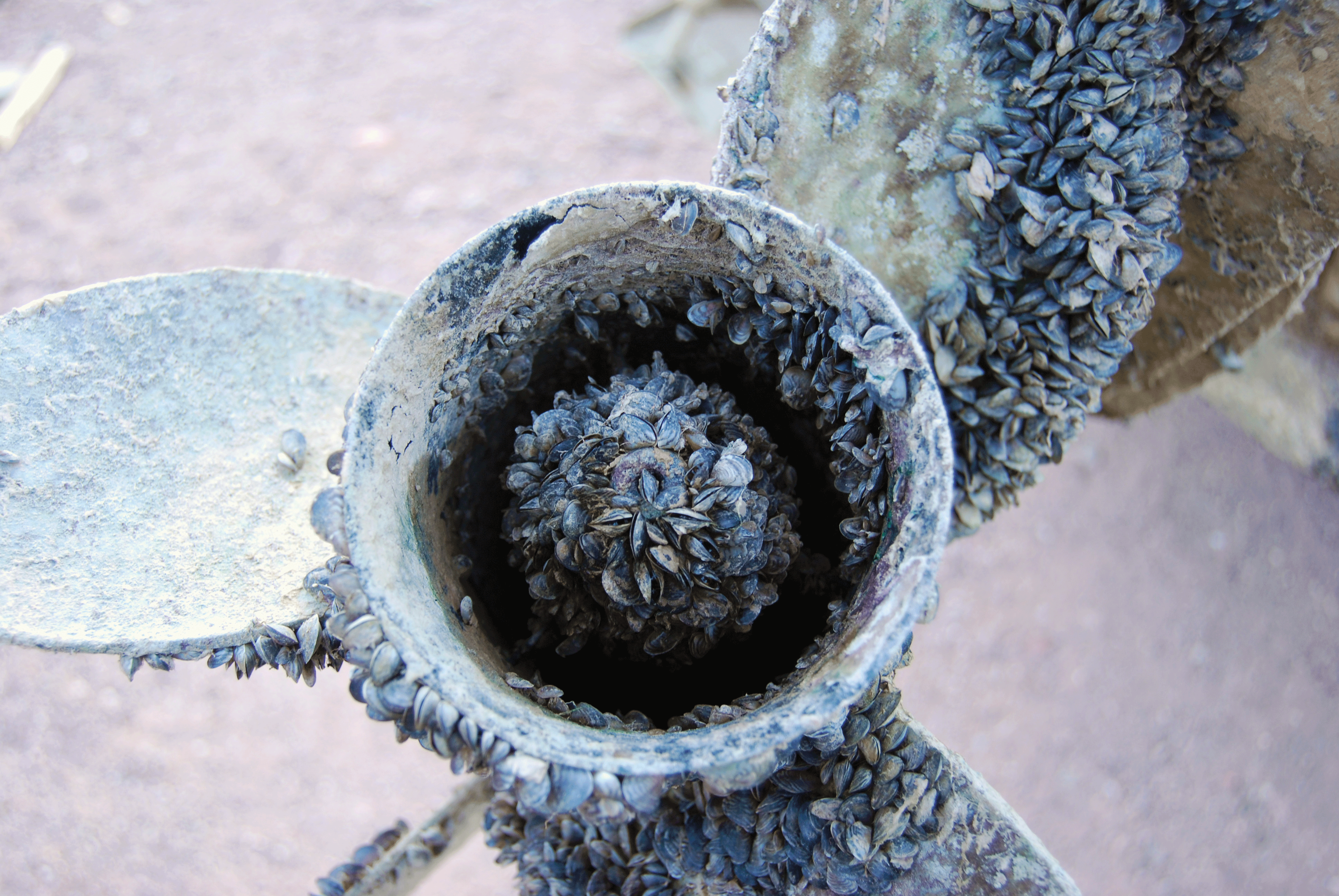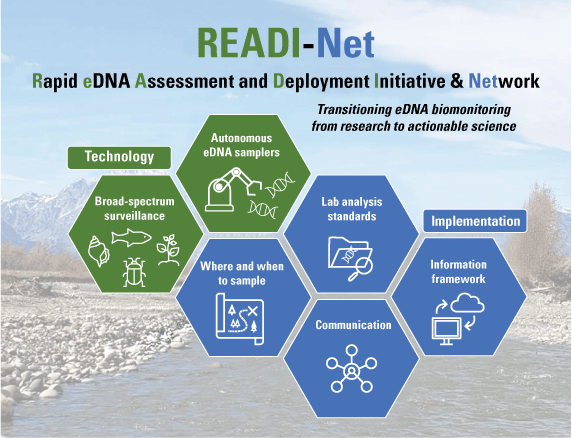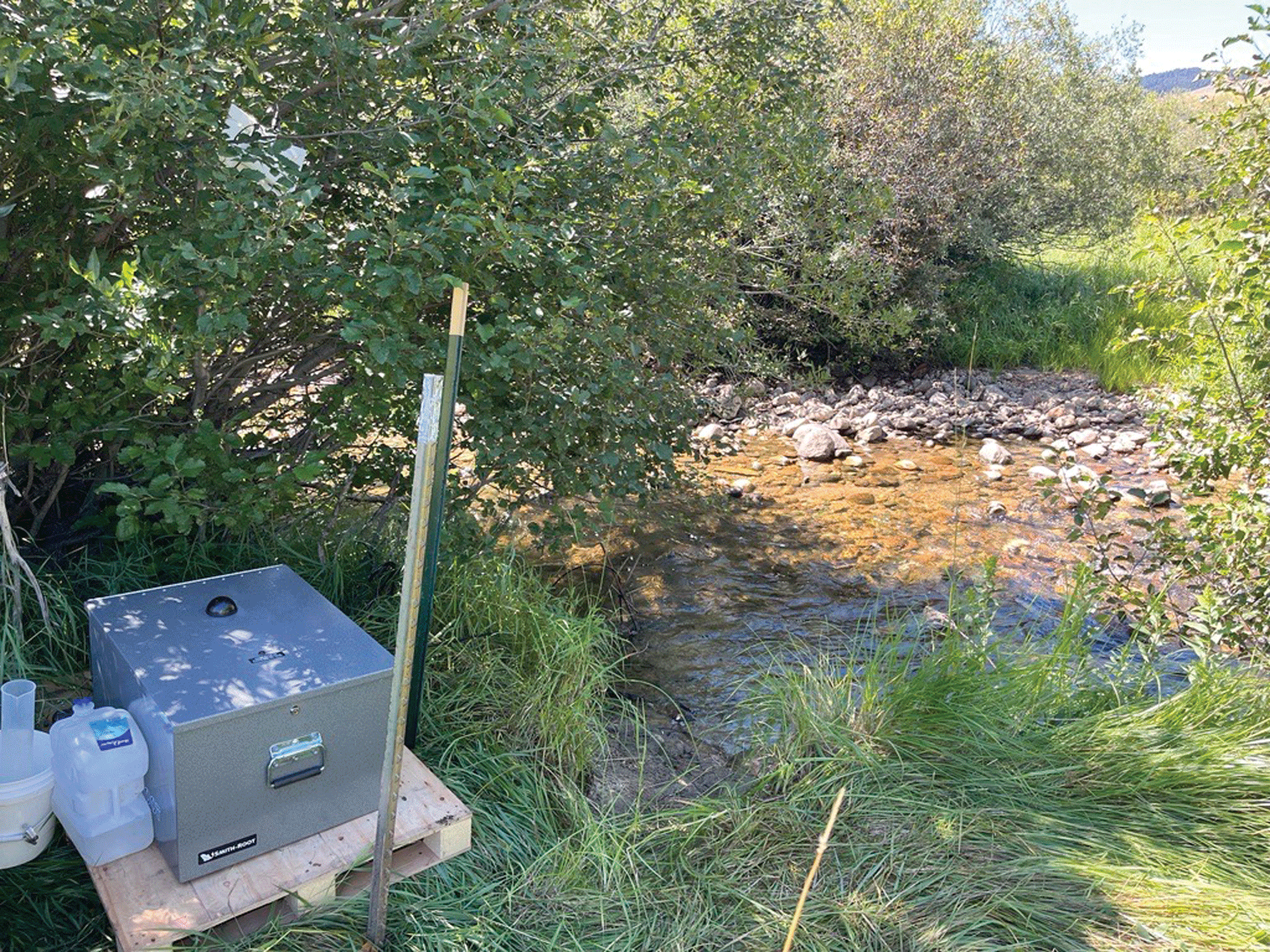READI-Net—Providing Tools for the Early Detection and Management of Aquatic Invasive Species
Links
- Document: Report (960 KB pdf) , HTML , XML
- Download citation as: RIS | Dublin Core
Overview
Early detection of biological threats, such as invasive species, increases the likelihood that control efforts will be successful and cost-effective. Environmental deoxyribonucleic acid (eDNA) sampling is an established method for the efficient and sensitive early detection of new biological threats. The Rapid eDNA Assessment and Deployment Initiative & Network (READI-Net) is a project designed with partners to provide a full suite of tools to maximize the power of eDNA sampling for detecting invasive species. The READI-Net suite of tools will include the availability of autonomous eDNA samplers, multispecies molecular DNA detection tools, strategic sample design, standardized and repeatable lab analysis, and a communication framework to deliver eDNA detection results to inform invasive species science, policy, and management. The READI-Net project is part of a national strategy to implement eDNA sampling for the early detection of and rapid response to biological threats.
READI-Net—Empowering eDNA for the Early Detection of Invasive Species
The U.S. Geological Survey’s READI-Net project supports the Department of the Interior’s National Early Detection and Rapid Response Framework, providing a coordinated strategy to proactively find and eradicate invasive species colonizing new habitats before they establish, spread, and cause harm. Specifically, READI-Net is designed to harness the power of autonomous eDNA samplers to detect traces of DNA in the environment, which can provide comprehensive and standardized monitoring of invasive species at scales not otherwise feasible. Based on research and designed with Federal, State, and Tribal input, READI-Net helps new or current users of eDNA technology tap into tested protocols and best practices to collect, analyze, and share eDNA data. The components of READI-Net can be accessed individually or as the full suite to provide practical and financial flexibility to meet stakeholders’ needs.

Environmental DNA offers early detection capabilities for invasive species management, and READI-Net offers tools to effectively implement the use of eDNA.
eDNA Enables Early Detection and Rapid Response
Environmental DNA methods capture and identify genetic traces from organisms, like fish and mussels, sight unseen. Even very small quantities of eDNA can be detected with this type of analysis, which provides early detection capabilities for invasive species. For example, even when organisms are at undetectable levels using visual sampling techniques such as trawl nets, eDNA analysis of a water sample can identify target species’ DNA with high confidence. Using eDNA, resource managers can detect invasive species early, thus increasing the chances that targeted management actions can be effective.

Invasive mussels encrust a propeller, making it inoperable (photograph by the National Park Service).
Effects of Biological Threats
Biological threats—such as invasive species, pathogens, and parasites—have the potential to harm the environment, economy, and human health (Roy and others, 2023). These disruptive species result in costly economic and ecological damage each year—including crop loss, damage to infrastructure, and wildlife and human disease transmission—and may lead to the extinction of native plants and animals. Aquatic invasive species can alter food webs and community structure, affect outdoor recreation, and have severe repercussions on fisheries and hydroelectric infrastructure (Smith and others, 2015). In the past 50 years, the global effect of aquatic invasive species alone has resulted in at least $423 billion in resource damage and management costs (Roy and others, 2023). Therefore, efforts to facilitate early detection of and rapid response to biological threats provide timely and cost-effective options for managing them.
The Components of READI-Net Deliver Complete eDNA Support
Autonomous eDNA samplers
-
• Provide cost savings of eDNA surveillance
-
• Increase odds of being at the right place and time to document new invasions
-
• Track changes in community and population dynamics through time
-
• Collect and store as many as 144 samples per deployment, which increases the odds of detecting the DNA of hard-to-find species like new invaders or even imperiled native species
Broad-spectrum surveillance
-
• Delivers cost-effective molecular solutions to simultaneously detect the eDNA of multiple species across a range of taxa (such as algae, mussels, and fish) from a single sample
Where and when to sample
-
• Provides statistically informed study design guidance to optimize the use of eDNA autosamplers for early detection and monitoring efforts
-
• Enhances chances of detecting target species
Lab analysis standards
-
• Provide standardized, repeatable lab techniques for rapid processing of eDNA samples
-
• Provide a quality management system to implement good lab practices and allow identification and correction of problems
-
• Ensure eDNA results are verifiable, transparent, and robust
-
• Use cross-lab eDNA sample tracking with barcodes to improve efficiency
Information framework
-
• Provides a framework to transmit eDNA information to a wide variety of users (resource managers, policymakers, municipalities, the public, and scientists) with adherence to jurisdictional authority concerns and clear communication of uncertainty and limitations
-
• Serves data in formats designed for specific groups through user-friendly dashboards
-
• Supports big data applications and uses approaches that make it easier to use eDNA data among partners as the READI-Net network grows
-
• Complies with Federal data management and release practices
Communication
-
• Engages stakeholders to enhance invasive species management eDNA networks
-
• Provides the potential to integrate with established networks for additional analytical power (for example, U.S. Geological Survey water monitoring network)

The six components of READI-Net provide tools to implement early invasive species detection using eDNA.
Who Are READI-Net Users?
Federal and State agencies, Tribes, municipalities, scientists, resource managers, and others who are interested in implementing or continuing eDNA surveillance of aquatic biological threats will benefit from READI-Net’s end-to-end support. The sensitivity, speed, and accuracy of eDNA, complemented by READI-Net autonomous samplers and standardized methods, provide an optimized methodology and a network of users for any entity interested in a cost-effective solution to the early detection of aquatic biological threats or post-treatment surveillance.

This autonomous eDNA sampler captures, filters, and preserves samples at 3-hour intervals as programmed by the user (photograph by the U.S. Geological Survey).
References Cited
Roy, H.E., Pauchard, A., Stoett, P., Renard Truong, T., Bacher, S., Galil, B.S., Hulme, P.E., Ikeda, T., Sankaran, K.V., McGeoch, M.A., Meyerson, L.A., Nuñez, M.A., Ordonez, A., Rahlao, S.J., Schwindt, E., Seebens, H., Sheppard, A.W., and Vandvik, V., 2023, The thematic assessment report on invasive alien species and their control—Summary for policymakers: Bonn, Germany, Intergovernmental Science-Policy Platform on Biodiversity and Ecosystem Services, 56 p., accessed September 26, 2023, at https://doi.org/10.5281/zenodo.7430692.
Smith, S.D.P., McIntyre, P.B., Halpern, B.S., Cooke, R.M., Marino, A.L., Boyer, G.L., Buchsbaum, A., Burton, G.A., Jr., Campbell, L.M., Ciborowski, J.J.H., Doran, P.J., Infante, D.M., Johnson, L.B., Read, J.G., Rose, J.B., Rutherford, E.S., Steinman, A.D., and Allan, J.D., 2015, Rating impacts in a multi-stressor world—A quantitative assessment of 50 stressors affecting the Great Lakes: Ecological Applications, v. 25, no. 3, p. 717–728, accessed October 3, 2023, at https://doi.org/10.1890/14-0366.1.
For More Information
Visit READI-Net at https://usgs.gov/norock/READI-Net.
Disclaimers
Any use of trade, firm, or product names is for descriptive purposes only and does not imply endorsement by the U.S. Government.
Although this information product, for the most part, is in the public domain, it also may contain copyrighted materials as noted in the text. Permission to reproduce copyrighted items must be secured from the copyright owner.
Suggested Citation
McKeon, L., and Wojtowicz, T., 2024, READI-Net—Providing tools for the early detection and management of aquatic invasive species: U.S. Geological Survey Fact Sheet 2024–3013, 2 p., https://doi.org/10.3133/fs20243013.
ISSN: 2327-6932 (online)
ISSN: 2327-6916 (print)
| Publication type | Report |
|---|---|
| Publication Subtype | USGS Numbered Series |
| Title | READI-Net—Providing tools for the early detection and management of aquatic invasive species |
| Series title | Fact Sheet |
| Series number | 2024-3013 |
| DOI | 10.3133/fs20243013 |
| Publication Date | May 23, 2024 |
| Year Published | 2024 |
| Language | English |
| Publisher | U.S. Geological Survey |
| Publisher location | Reston, VA |
| Contributing office(s) | Northern Rocky Mountain Science Center |
| Description | 2 p. |
| Online Only (Y/N) | N |


